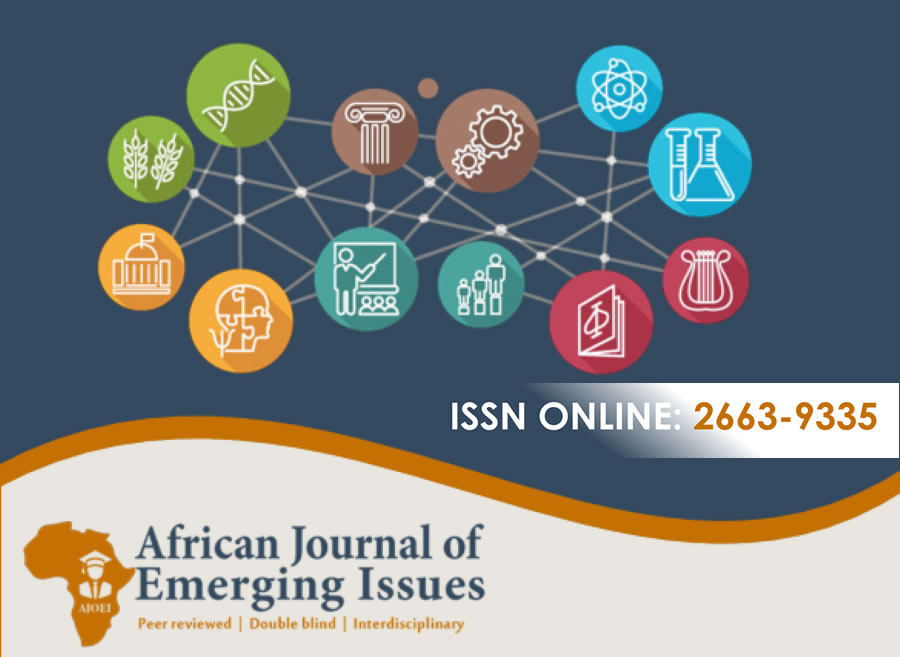ANALYSIS OF HOW THE INCONGRUITIES MANIFESTS HUMOUR: PERSPECTIVE FROM KANSIIME’S JOKES
Abstract
Purpose of Study: This study sought to investigate how the incongruities manifests humour in Kansiime’s jokes.
Problem Statement: Humour, a tool of language used by comics can be employed in various texts. Studies conducted from philosophical, psychological, sociological, anthropological and linguistic perspectives focus on humour and have shown that it is important to investigate the various ways in which humour can manifest itself in a discourse.
Methodology:In assessing Kansiime’s sketches an insight was drawn into how hearers are able to interpret texts so as to perceive them as humorous. Having adopted the relevance theoretical framework which tries to give account of how hearers interpret texts during verbal-communication it necessitated that we define the place of the hearer, and at the same time that of the speaker, since the comedian endeavors to judge their minds. For a successful interpretation of a text during a given discourse the hearer must be able to judge the intentions of the speaker, while the speaker must also be able to give sound context for the interpretation process.
Results: For an incongruous interpretation to be successful the hearer must be aware of the speaker’s communicative intention, it is then that the hearer is able to attain the intended cognitive effects. It is within the jurisdiction of the speaker to predict the interlocutor’s capability to access certain cultural assumptions.
Conclusion: The humorist in creation of humour takes advantage of rhetorical power such as hyperbole, metaphors. Irony is part of this kind of language use but in this study the mentioned rhetorical language has been used to create ironies.
Recommendation: Since this was a case study of one comedian which looked at how Kansiime uses irony to create humour, it is necessary to explore the use of this communicative feature across different comedians to establish its manifestation of humour.
Keywords: Incongruity, Humor, Irony, Audience Perception, Kansiime
References
Black, S. P. (2012). "Laughing to Death: Joking as Support amid Stigma for Zulu-speaking South Africans Living with HIV". Journal of Linguistic Anthropology, 22(1), 87–108.
Bryant, G. (2012). "Is Verbal Irony Special?" Linguistics and Language Compass, 6, 673–685.
Burgers, C., Van Mulken, M., & Schellens, P. J. (2012). "Verbal Irony: Differences in Usage. Across Written Genres." Journal of Language and Social Psychology, 31, 290–310.
Cappelli, G. (2003). “Expats’ Talk”: Humour and irony in an expatriate’s travel blog, 1–21. Clark, B (2013). Relevance Theory. Cape Town: Cambridge University Press.
Critchley, S. (2002). On Humour; Thinking in Action. New York: Routledge.
Cundall Jr, M. K. (2007). Humor and the limits of incongruity. Creativity Research Journal, 19(2-3), 203-211.
Dynel, M. (2008). "Introduction to Special Issues on Humour: A modest attempt at presenting comtemporary Linguistic approach to Humour Studies." In Lodz Papers in Pragmatics. 4.1 Special issue on Humour: 1–12.
Dynel, M. (2009). "Beyond a joke: Types of Conversational Humour". Linguistics and Language Compass", 3, 1284–1299.
Hancock,J,T.(2004)."Verbal Irony Use in Face-To-Face and Computer-Mediated Conversations." Journal of Language and Social Psychology, 23(4), 447–463.
Jodlowiec, M. (1991). “What makes jokes tick”. UCL Working Papers in Linguistics 3: 241-253.
Kihara, P, & Shroeder H. (2012) "A relevance-Theoritical Analysis of Aspects of Mchongoano." Journal of Language and Linguistics: vol 2, Derpartment of Linguistic and Languages, University of Nairobi: 67-78.
Kinuu, K, C (2013). A Pragmatic Approach to Kenyan Standup Comedy: A Study of Erick Omondi's Performances. Unpublished MA Dessertation.
Ruch, W. (1988). Sensation seeking and the enjoyment of structure and content of humour: Stability of findings across four samples. Personality and individual differences, 9(5), 861-871.
Sperber, D. & Wilson D (2002) "Pragmatic Modularity and Mind reading". Mind and Language 17.1-: 3-23.
Sperber, D., & Wilson, D. (1995). Relevance: Communication and cognition. Oxford Blackwell
Vuorela, T. (2005). "Laughing Matters: A Case Study of Humor in Multicultural Business Negotiations". Negotiation Journal, 21(January), 105–130.
Wilson, D. (1994). Relevance and understanding. In G. Brown, K. Malmkjæ, A. Pollit, & J. Williams (Eds.), Language and Understanding (pp. 35–58). Oxford: Oxford University Press.
Wilson, D. (1995) Relevance: Communication and cognition. 2nd edition. Oxford: Blackwell.
Wilson, D (2006). "The Pragmatics of Verbal irony:Echo or Pretence?" In Lingua.116, 1722- 1743.
Wilson D. & Sperber D. (2004) 'Relevance Theory.' In L, Horn and Ward. The handbook of pragmatics. Oxford. Blackwell: Oxford 633-657
Yus, F. (1999). "Misunderstandings and Explicit/Implicit Communication. Pragmatics, 9, 487– 517.
Yus, F (2003) "Humour and the Search for Relevance." Journal of Pragmatic.35 (9):1295- 1331.
Yus, F. (2008). "A Relevance-Theoritic Classification of Jokes". Lodz Papers in Pragmatics, 4.1, 131–157.
Yus, F. (2012). "Strategies and Effects in Humorous Discourse: The case of Jokes. In Decade of Relevance. Journal of Pragmtics, 30, 305-345.





